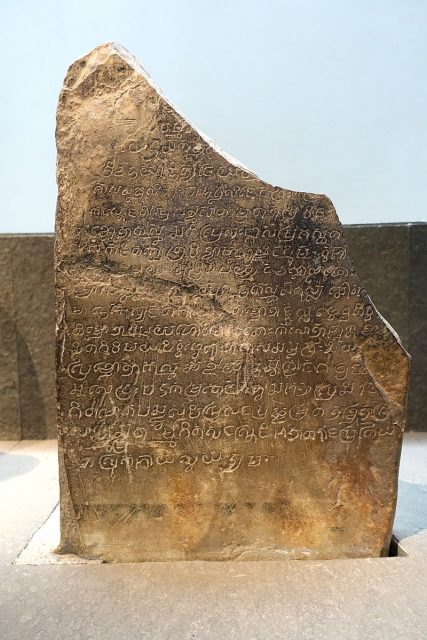Today, it’s almost impossible to conceive of a world that doesn’t have the concept of “zero.” Nevertheless, until relatively recently, in most societies around the world, the number zero simply didn’t exist.
The invention of zero in around the 5th century AD has fundamentally determined the course of modern history, providing the mathematical basis for many of the inventions and technologies that have shaped the modern world. Calculus, algebra, algorithms and modern computing systems all depend on this vital mathematical innovation.

In recent years, historians have been fascinated by where and when the number zero was first used. There is some evidence that some ancient societies did have means to express the concept of nothingness, and used a placeholder or a space to indicate where zero would have been positioned in longer numbers.
Ancient Sumerian texts, for example, have been found to contain placeholders for zero when expressing dates or numbers. Similarly, 1st century American Indian societies regularly used a placeholder to mark the spot where zero should have been.

There is no evidence that these societies used zero in mathematical calculations, as a number like 1, 2 or 3. Rather, the presence of a placeholder indicates the absence of a number, not the number zero itself.
However, according to the Guardian, a recent discovery suggests that by the 3rd or 4th century AD, the modern symbol for zero had come into use in the Indian subcontinent.
The famous Bakhshali manuscript, found in a field near Peshawar in modern-day Pakistan, has long been noted for its early representation of the number zero as a dot, the precursor to the hollow oval we use to denote zero today.

It was originally thought that this Sanskrit manuscript dated from the 9th century AD, but recent work by scientists and historians at the University of Oxford suggest that it could be up to 500 years older than previously stated. This means it could date from the 4th or even 3rd century AD.
In the Bakhshali manuscript, the zero “dot” is still used as a placeholder rather than an explicit number, but historians believe that its use in this text marks a shift towards the conceptualization of zero as an important number in its own right.

According to the Guardian, by around the mid-5th century AD, Indian mathematicians were using zero as an important number in their calculations, allowing them to solve complex mathematical problems.
The root of this shift may have been linked to concepts and philosophies embedded in Buddhist and Hindu systems of thought. Emptiness, or “sunyata” is a core concept in Buddhist philosophy, and it is from this Sanskrit word that our modern English word “zero” is derived.

In the early 7th century, the Indian astronomer and mathematician Brahmagupta wrote the first clear mathematical definition of zero, although he did not claim to have invented the concept himself. Instead, according to the Guardian, it seem likely that it had already been in use in Indian mathematics for some time before Brahmagupta wrote his treatise.
The number zero soon spread from India and was particularly influential in shaping mathematical and philosophical developments in the medieval Islamic world, paving the way for complex equations, algebra and calculus. It was at this point that the Arabic symbol for zero, a small, hollow circle, came to the West, as part of the Hindi-Arabic system of numerals.
However, it took some time before the concept of zero took off in Western Europe. In part, resistance to the idea was both philosophical and religious.
The western philosophical tradition had no concept of nothingness; indeed, such a concept was thought to be a theological impossibility.
The number zero was associated with the devil, and as a result, there was some initial skepticism about its utility and validity.
Nevertheless, the number zero has come to shape the modern world in profound ways. The mathematical developments that emerged as a result of its discovery have shaped our philosophies, scientific discoveries and technological innovations.
Read another story from us: The Codex Gigas Contains the Most Famous Medieval Image of Satan
It continues to shape contemporary investigations in physics and mathematics, as it is a critical component in understanding quantum physics, the notion of infinity and even the origins of the universe itself. Not bad for a whole lot of nothing.
